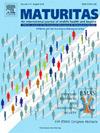Prevalence of and factors associated with potassium supplementation in older adults from general practices in Germany
IF 3.6
2区 医学
Q2 GERIATRICS & GERONTOLOGY
引用次数: 0
Abstract
Objectives
Little information exists on potassium supplementation in older adults living in the community. Therefore, this study investigated the prevalence of potassium supplementation and its associated factors in patients aged ≥65 years followed in general practices in Germany.
Study design
Retrospective.
Main outcome measures
The prevalence analysis was conducted on a sample of adults aged ≥65 years followed for at least 12 months in 1993 general practices in Germany between 2014 and 2023. The analysis focusing on the identification of factors associated with the prescription of potassium supplementation was done on two subsamples: individuals with (n = 38,517) and without potassium supplementation (n = 38,517) matched using a propensity score for age, sex, and the index year (i.e., date of first prescription for the potassium supplementation group and a random date for the no‑potassium supplementation group). Factors potentially associated with potassium supplementation were several diagnoses and prescriptions documented within 12 months before or at the index date.
Results
The prevalence of potassium supplementation was 4.4 % among 882,662 adults aged ≥65 years who were followed for at least 12 months in general practices. The proportion of people receiving potassium supplementation increased with age. The prescription of potassium supplementation was associated with multiple diagnoses and prescriptions, the strongest effect sizes being for hypokalemia (OR = 53.99), loop diuretics and thiazides (OR = 4.68), and hyperaldosteronism (OR = 3.38).
Conclusions
In this preliminary research, less than 5 % of older adults received potassium supplementation in primary care. More data are warranted to corroborate this figure in other settings.
从德国的一般实践来看,老年人补充钾的患病率和相关因素。
目的:关于社区老年人补充钾的信息很少。因此,本研究调查了德国年龄≥65岁患者补充钾的流行情况及其相关因素。研究设计:回顾性。主要结局指标:对2014年至2023年间在德国1993年全科诊所随访至少12个月的≥65岁成年人样本进行患病率分析。对两个亚样本进行了重点分析,以确定与钾补充剂处方相关的因素:有(n = 38,517)和没有补充钾(n = 38,517)的个体,使用年龄、性别和指标年(即,钾补充剂组的第一次处方日期和无钾补充剂组的随机日期)的倾向评分进行匹配。可能与钾补充剂相关的因素是在索引日期之前或之后的12个月内记录的一些诊断和处方。结果:在882,662名年龄≥65岁的成年人中,钾补充剂的患病率为4.4%,这些成年人在一般情况下随访至少12个月。补充钾的人的比例随着年龄的增长而增加。补钾处方与多种诊断和处方相关,影响最大的是低钾血症(OR = 53.99)、循环利尿剂和噻嗪类药物(OR = 4.68)和高醛固酮增多症(OR = 3.38)。结论:在这项初步研究中,不到5%的老年人在初级保健中接受了钾补充剂。需要更多的数据来证实其他情况下的这一数字。
本文章由计算机程序翻译,如有差异,请以英文原文为准。
求助全文
约1分钟内获得全文
求助全文
来源期刊

Maturitas
医学-妇产科学
CiteScore
9.10
自引率
2.00%
发文量
142
审稿时长
40 days
期刊介绍:
Maturitas is an international multidisciplinary peer reviewed scientific journal of midlife health and beyond publishing original research, reviews, consensus statements and guidelines, and mini-reviews. The journal provides a forum for all aspects of postreproductive health in both genders ranging from basic science to health and social care.
Topic areas include:• Aging• Alternative and Complementary medicines• Arthritis and Bone Health• Cancer• Cardiovascular Health• Cognitive and Physical Functioning• Epidemiology, health and social care• Gynecology/ Reproductive Endocrinology• Nutrition/ Obesity Diabetes/ Metabolic Syndrome• Menopause, Ovarian Aging• Mental Health• Pharmacology• Sexuality• Quality of Life
 求助内容:
求助内容: 应助结果提醒方式:
应助结果提醒方式:


